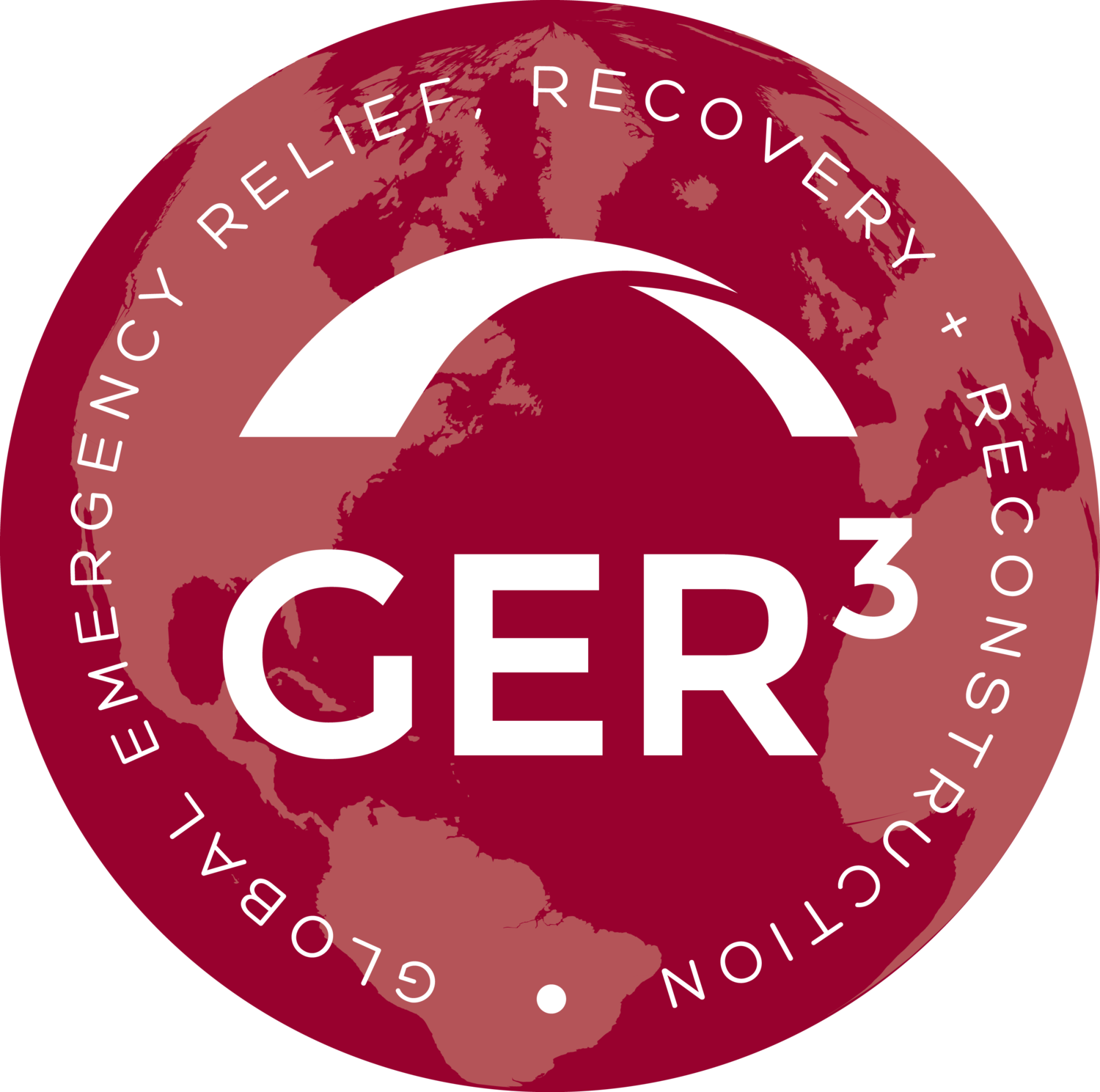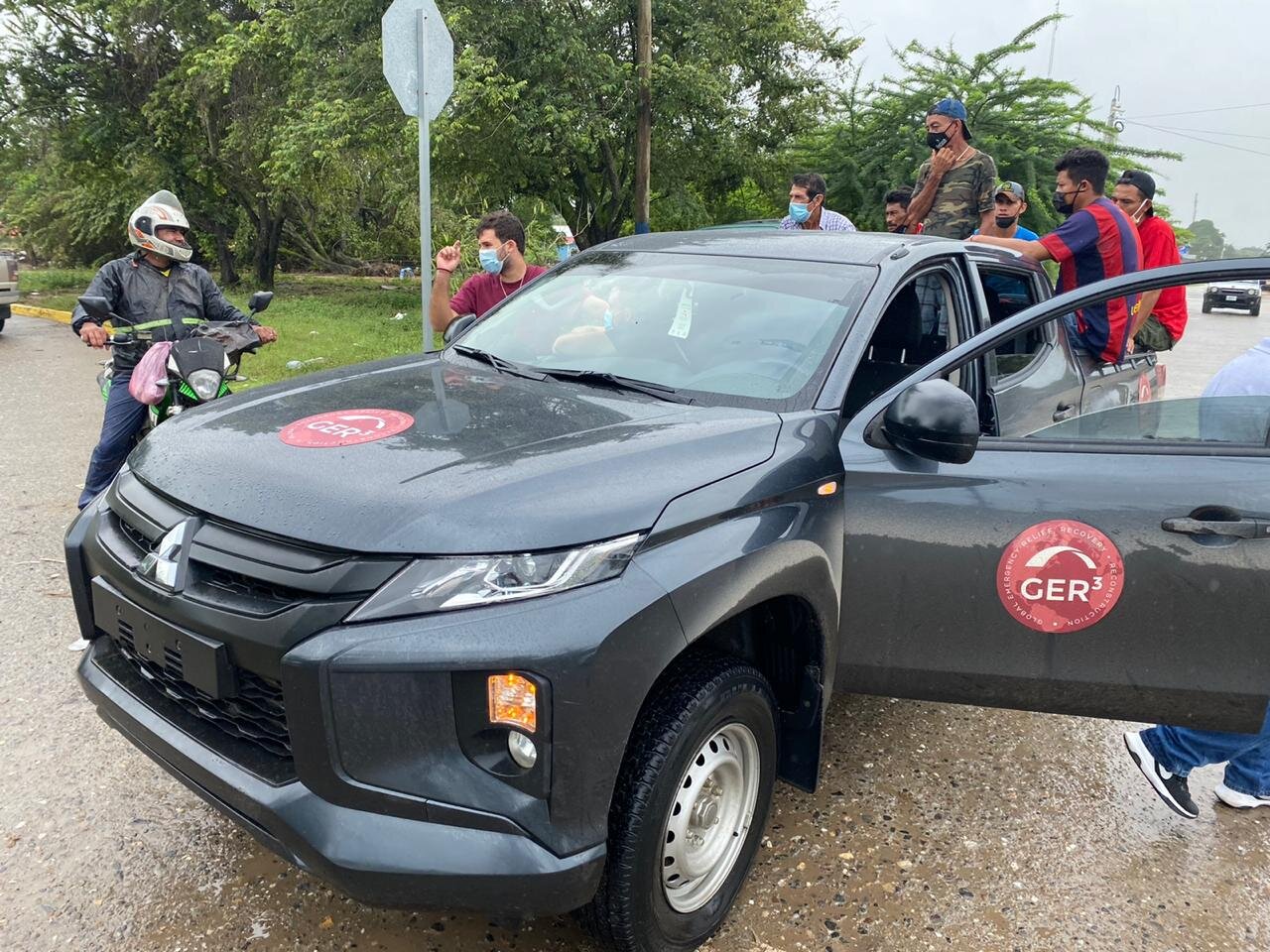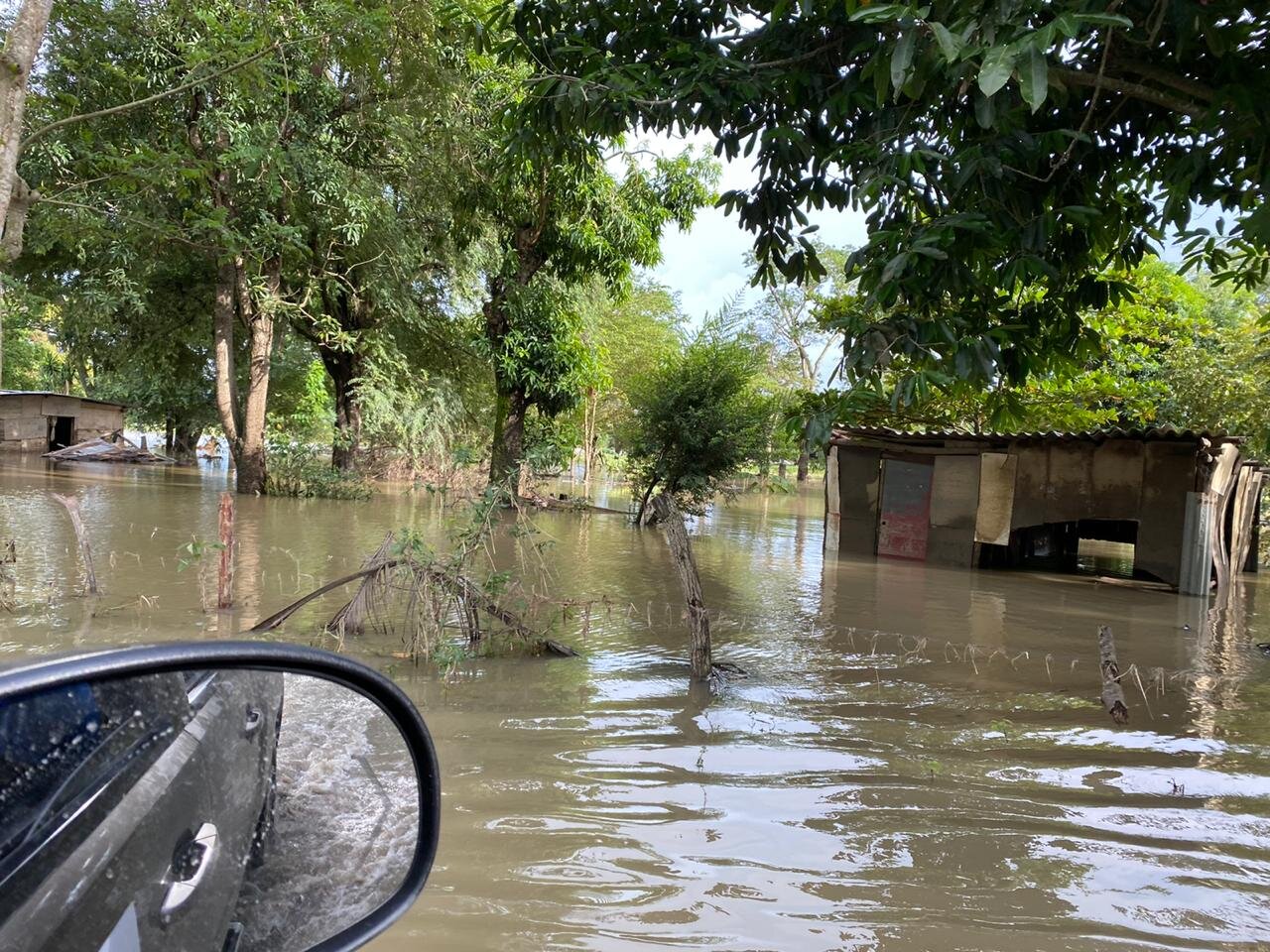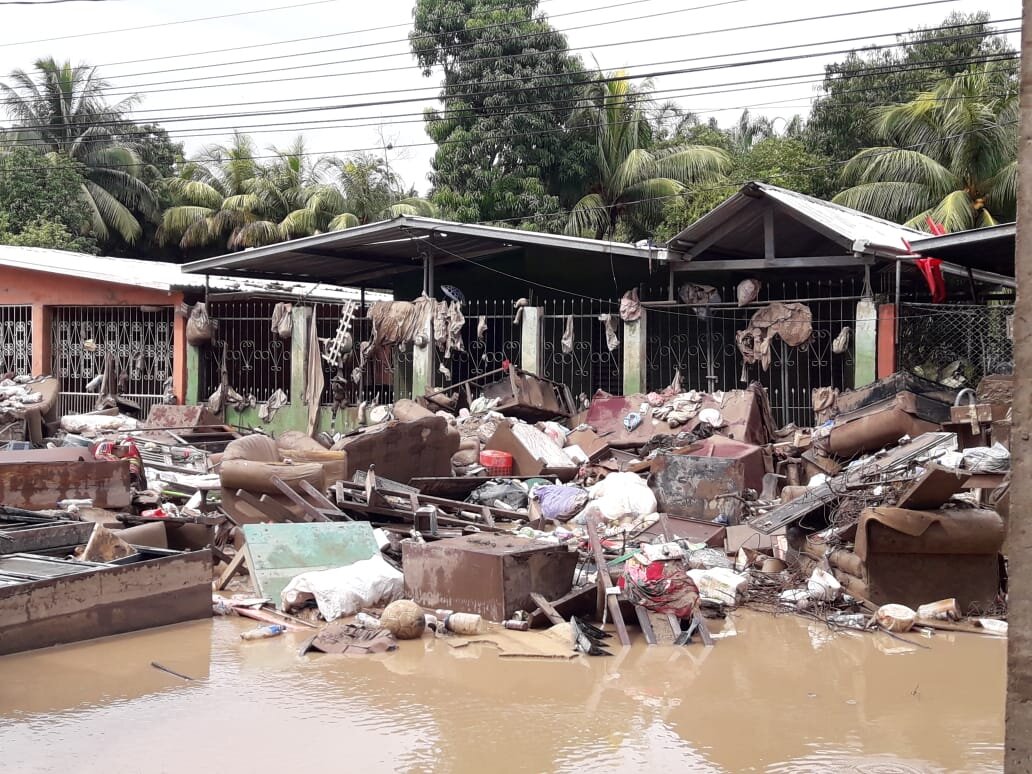CONTEXT
Category 4 Hurricane Eta struck Honduras on November 3, 2020 as one of the worst hurricanes to hit Central American since Hurricane Mitch. With rainfall of up to 23 inches, the devastating storm took the lives of over 178 individuals. Just two weeks later on November 16, Hurricane Iota made landfall in the same region, adding an additional 10-20 inches of rainfall to the already hyper saturated lands, creating widespread flooding of over 200 square kilometers, and killing an additional 41 people while hundreds remain missing. Rainfall continues incessantly to this day exacerbating disaster conditions and impeding relief efforts.
Estimates are that 3,022,464 people in Honduras have been impacted by the storms with a high concentration of those affected in the department of Cortés. Tens of thousands of homes have been damaged or destroyed with bridges and roads no longer passable, impeding humanitarian access. Many communities remain isolated with difficultly in access and communication; recent reports suggest over 100,000 people are isolated across 69 communities. Many municipalities in Cortés have sustained total or partial disruptions in electricity and telecommunications systems. Water supply systems are damaged due to power outages or damage to infrastructure. Crops have been lost affecting access to income, good and services. Affected communities and are in need of immediate relief support to begin recovery efforts.
GER3 RESPONDS
GER3 debris assessment team in San Pedro Sula
GER3’s Global Response Team (GRT) has been operating out of San Pedro Sula since November 21st with additional coordination based in Tegucigalpa since November 18th. Our GRT has conducted initial assessments in and around San Pedro Sula including Chamelecón, La Lima, San Antonio Cortes, El Progreso, and Choloma. These communities face significant relief and recovery challenges, particularly related to debris management; the significant debris is impeding the relief and recovery process by limiting access and making the initiation of recovery and rebuilding extremely difficult. While many have evacuated the area, many remain in their communities and are already attempting to begin the reconstruction process for their homes and local infrastructure.
PROGRAM DESIGN
Community-led relief and recovery programs will be tailored to meet needs of communities in the most affected areas of the Cortés Department. Programs will include in-depth community and household assessments, provision of items for shelter and clean-up kits, debris management (clearance and recycling), livelihoods opportunities (including the hiring of local persons to support the recovery), and green recovery and reconstruction mechanisms, including the possible introduction of off-grid/micro-grid electricity solutions and the reuse of recycled materials (including organic debris).
The proposed programs in Cortés Department will be structured, designed and continually adapted based on the following key program components:
- Conduct community and household-level assessments to assist with design of relief and recovery interventions
- Remove hurricane debris (recycling and re-using where possible)
- Provide relief supplies (temporary shelter items, household items and clean-up kits)
- Provide livelihoods and small business opportunities
- Ensure environmentally conscious and focused recovery
NEXT STEPS
GER3 is mobilizing local resources to support with immediate debris clearance, provide essential relief supplies to vulnerable communities and design sustainable recovery support. Simultaneously, GER3 is seeking donor funding to extend the impact of our work over the coming weeks and months. GER3’s initial funding to support this response effort is limited, so donations of any amount are extremely helpful and appreciated to support what we hope will develop into longer-term, impactful response programming.
Thank you in advance for your interest and support to GER3 and our response programs in Honduras.




